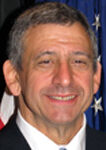There are many questions today about when and where the next large-scale mass-casualty incident (MCI) is going to occur. Of particular concern to the nation’s first-responder community is how to handle such an incident when it involves the intentional contamination, by biological agents, of a large number of victims. One scenario that has been exercised fairly often postulates some of the victims leaving the site of the incident and contaminating other citizens, in other areas, who were not at the site of the incident.
It can be assumed in many but not all areas of the country that the use of first-responder assets at the incident scene will start the decontamination effort and be reasonably effective, but it is far from clear what first responders are supposed to do in incidents where the ability to hold victims in place is not possible. An incident in which there has been the dissemination of biological materials is a good example of the problem faced by first-responder agencies and, although not on the high-probability list, there are several unanswered questions related to the large-scale triage, treatment, and transportation of victims.
One source of information, and guidance, that has been available for several years, but has not been utilized as well or as frequently as it should be, is the Metropolitan Medical Response System (MMRS). The Department of Health and Human Services (HHS) started to realize in the early 1990s that U.S. medical services were (and still are) ill-equipped and not trained to recognize or cope with the effects of attacks in which weapons of mass destruction (WMDs), particularly biological weapons, are used. The MMRS program was created in 1996, partly in response to the 1995 mass-transit Sarin nerve-agent attack in Tokyo by the Aum Shinrikyo cult and the domestic terrorist bombing of the Alfred P. Murrah Building in Oklahoma City, also in 1995. The Tokyo incident confirmed the belief that an attack on an enclosed area in which there are large numbers of people present might well produce a significant number of injured and contaminated casualties.
The MMRS program helps highly populated political jurisdictions develop plans, conduct training and exercises, and acquire not only pharmaceuticals but also the personal protective equipment required to achieve the enhanced capability necessary to respond to a mass-casualty event caused by a WMD terrorist act. The MMRS assistance supports the efforts of those jurisdictions to expand and improve their response capabilities, using their own resources, during the first hours crucial to the saving of lives and protecting the local population until significant external assistance can arrive on the scene.
Guidelines, Linkages, and a Coordinated Effort
The systematic approach postulated by the MMRS guidelines requires linkages among first responders, medical treatment facilities, public-health and emergency-management agencies, volunteer organizations, and other local groups to work together to develop the capabilities needed to reduce the mortality and morbidity rates that would result from terrorist attacks likely to produce large numbers of casualties. The same guidelines also require the integration of planning efforts with neighboring political jurisdictions, and with both state and federal agencies, and emphasize the importance of developing and implementing enhanced mutual-aid agreements between and among neighboring jurisdictions. The integration achieved, if these guidelines are followed, should result in a smooth transfer of victims to patient status.
The MMRS program is designed not only to facilitate a smooth transition between the multiple agencies and jurisdictions that are participating in the program but also to form them into appropriate teams based on their respective areas of responsibilities and training. Within the greater Washington, D.C., metropolitan area, to cite one important example, the numerous jurisdictions that are members of the D.C. Council of Governments all have representation on the area MMRS plan.
When looking at the make-up of the “team” one will find that there is a coordination that transcends the area’s political and geographic boundaries per se. During the response to the 11 September 2001 attack on the Pentagon, the area’s MMRS plan was immediately implemented, and local members responded by maintaining an active presence during the first two weeks following the attack, carrying out such duties as the decontamination of all entry crews, medical monitoring, rehabilitation, and other assigned duties. It was obvious to everyone concerned that the MMRS plan was a valuable asset to have available at the time of the attack. Moreover, the personnel who responded fit well into the system, considering the previous training they had had and the working relationships that had been established throughout the region.
As the nation has learned since the events of September 2001, the integrated coordination of local assets and personnel will continue to be the cornerstone of any successful response to a mass-casualty incident for the foreseeable future. In short, the MMRS adds another much-needed layer of protection that will be of significant value during another large-scale incident – but only when it is used appropriately and in accordance with established guidelines.


